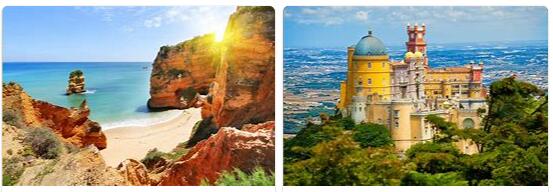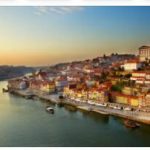The light is dimmed, the candles flicker, a chair scrapes against the floor. The silhouettes of a trio take their places below the bar. Devotional silence in a room that only a few seconds earlier resounded with loud conversations. The violin strikes the beat and the singer fills the room with her powerful, nasal voice. Words about longing and love that are more painful than death. Guests inhale the words and music – some with recognizable faces, others with trembling lips. Fado is the sound of Portugal and offers a unique experience during a holiday in Lisbon and other Portuguese cities.
Population: 11 mill.
Capital: Lisbon
Language: Portuguese
- the world’s oldest and still functioning bookstore is located in Lisbon. It was founded in 1732.
- the first rhino to set foot in Europe, did it in Lisbon. The year was 1515 and the rhino was a gift to King Manuel l.
Lisbon
Alfama is one of Lisbon’s most colorful neighborhoods, where many Jews settled after the Spanish Inquisition and where the melancholic fado singers occupy the bars after dark. Fadon’s greatest artist was the legendary Amalia Rodrigues, who when she died in 1999 received a state funeral followed by three days of national mourning. Her grave can be visited in the Church of Santa Egracia and her home can be seen in the Casa-Museu Amalia Rodrigues. Here, pictures, furniture, wardrobes and jewelery tell the story of the queen of fado music, whose name became widely known far beyond the borders of Lisbon and Portugal.
Another exciting neighborhood in Lisbon is the equally charming Bairro Alto on the ridge opposite Alfama. Here, one of the most interesting attractions is surprisingly an elevator construction in the form of the exciting Elevador de Santa Justa, created by Gustave Eiffel’s student, Raul Mesnier du Ponsard in the early 20th century. The old workers’ quarter is also home to the handsome Gloria tram and many fun shops, fish restaurants, nightclubs and the city’s botanical garden. It is in Bairro Alto that you can experience the largest collection of Portuguese art from the 1100s – 1800s at the Museo Nacional de Arte Antiga, and the parliament which is housed in an old Benedictine monastery from the 16th century when Portugal experienced its heyday.
A half-hour tram ride from the center of Lisbon is the Belém district, which means Bethlehem. It was here at the mouth of the Tagus River that the great seafarers set out to discover the world. A monument, Padrão dos Descobrimentos, has been erected down by the water in memory of all the explorer. The monument is fittingly designed as a ship and depicts, among other things, Henrik Sjöfararen, one of the architects who were behind the founding of Portugal as a seafaring nation and colonial power. Among all the famous names is Vasco da Gama, who found the sea route to India , Pedro Álares Cabral, who discovered Brazil, and Ferdinand Magellán, who was the first to sail around the world. On the site next to the monument, there is a mosaic depiction of the journeys that the Portuguese explorers embarked on, and from the top, the view of the Tagus is absolutely stunning. Belém will also be seen for the UNESCO-protected Mosteiro dos Jéronimos Monastery – one of Portugal’s most notable buildings – and for the Torre de Belém lookout tower, built in 1515 to ensure the security of the capital. A visit to the famous pastry shop Pastéis de Belém is an experience in itself.
Another attraction that should not be forgotten during a trip to Portugal and Lisbon is Parque das Nações, the people’s park, where the large-scale world exhibition Expo 98 was held and which today houses a number of interesting sights, not least mind-boggling architecture. Take the metro there – Lisbon’s underground transport system is an excellent example of the fact that infrastructure and public transport do not have to be boring. Each station has its own personal character and is a small work of art in itself.
Other Portugal
Portugal is, of course, more than Lisbon. According to top-medical-schools, the 11 million large neighboring country to Spain on the Iberian Peninsula also offers memorable excursions to the castle town, Sintra, relaxation and beach holidays in Albufeira and other beautiful towns along the Algarve coast, historical experiences in the ancient Roman city of Conimbriga, and holidays in the port wine trail in Porto and surroundings. Out in the Atlantic there are also two Portuguese archipelagos that are excellent for beach holidays – Madeira and the Azores. Both archipelagos have been inhabited for thousands of years, but it was not until the 15th century that the Portuguese discovered them. The Azores were “discovered” in 1427 by one of Henrik Sjöfararen’s captains. The formerly large seafaring nation no longer has the same position of power in the world and adventurers prefer to stay at home in Portugal. They do it right – Portugal is a country well worth discovering.









